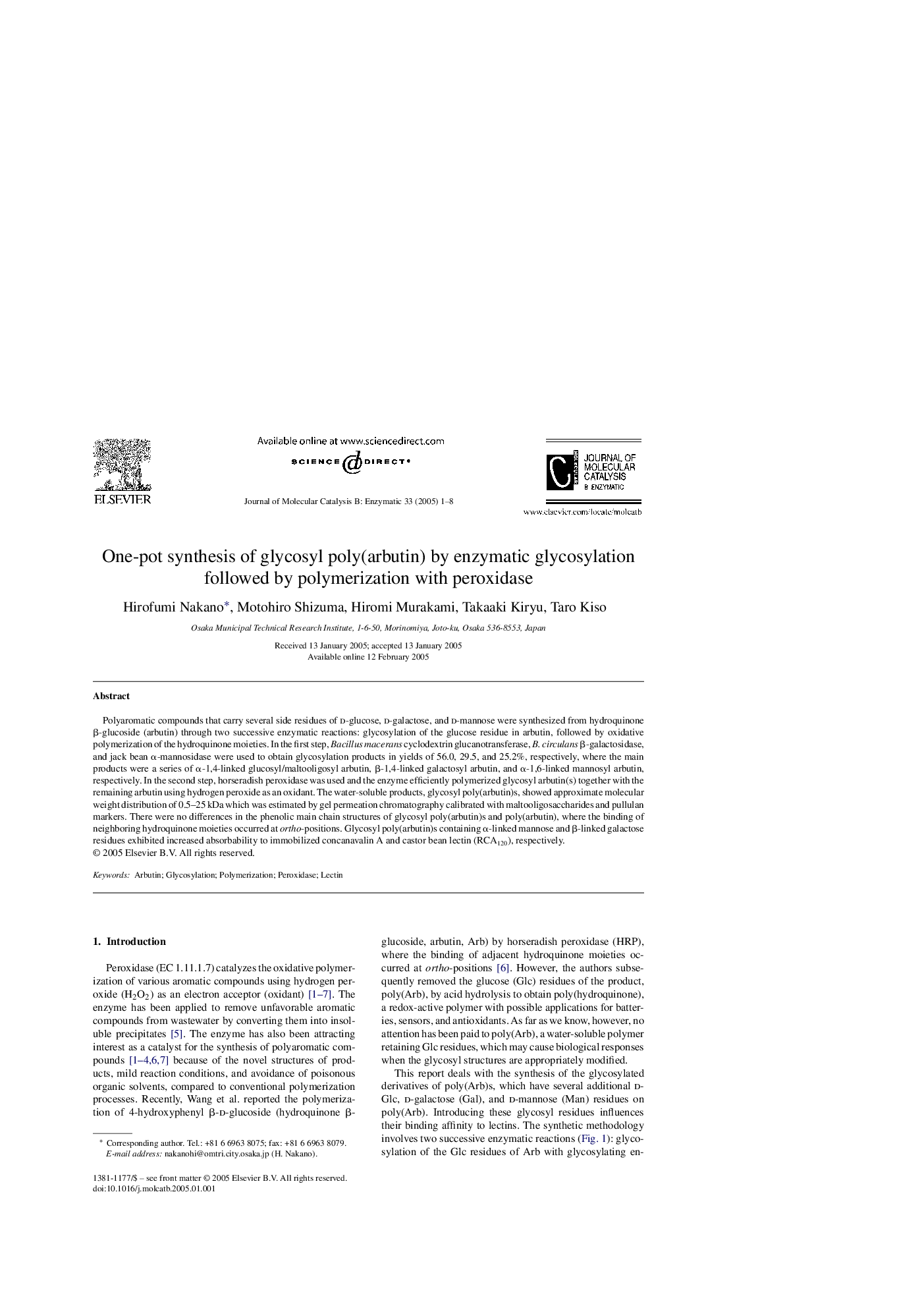| Article ID | Journal | Published Year | Pages | File Type |
|---|---|---|---|---|
| 9616782 | Journal of Molecular Catalysis B: Enzymatic | 2005 | 8 Pages |
Abstract
Polyaromatic compounds that carry several side residues of d-glucose, d-galactose, and d-mannose were synthesized from hydroquinone β-glucoside (arbutin) through two successive enzymatic reactions: glycosylation of the glucose residue in arbutin, followed by oxidative polymerization of the hydroquinone moieties. In the first step, Bacillus macerans cyclodextrin glucanotransferase, B. circulans β-galactosidase, and jack bean α-mannosidase were used to obtain glycosylation products in yields of 56.0, 29.5, and 25.2%, respectively, where the main products were a series of α-1,4-linked glucosyl/maltooligosyl arbutin, β-1,4-linked galactosyl arbutin, and α-1,6-linked mannosyl arbutin, respectively. In the second step, horseradish peroxidase was used and the enzyme efficiently polymerized glycosyl arbutin(s) together with the remaining arbutin using hydrogen peroxide as an oxidant. The water-soluble products, glycosyl poly(arbutin)s, showed approximate molecular weight distribution of 0.5-25 kDa which was estimated by gel permeation chromatography calibrated with maltooligosaccharides and pullulan markers. There were no differences in the phenolic main chain structures of glycosyl poly(arbutin)s and poly(arbutin), where the binding of neighboring hydroquinone moieties occurred at ortho-positions. Glycosyl poly(arbutin)s containing α-linked mannose and β-linked galactose residues exhibited increased absorbability to immobilized concanavalin A and castor bean lectin (RCA120), respectively.
Related Topics
Physical Sciences and Engineering
Chemical Engineering
Catalysis
Authors
Hirofumi Nakano, Motohiro Shizuma, Hiromi Murakami, Takaaki Kiryu, Taro Kiso,
